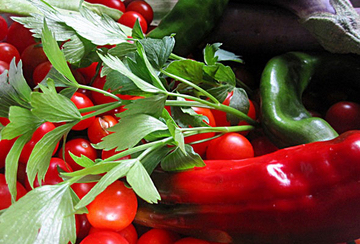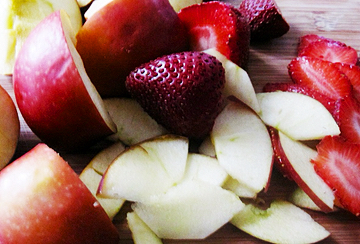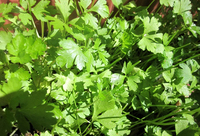
Vegetables

Suburban gardeners often plant vegetables more for the joy of seeing plants grow than for the actual harvest.
However, if you're wondering how many vegetables you should plant in a kitchen garden to feed a family, here are some general guidelines.
For nightshades like tomatoes, potatoes, peppers, and eggplants, aim for 5 plants per person.
The same principle holds true for brassicas like cauliflower, cabbage, Brussels sprouts, and broccoli.
You only need one hill for each person when growing zucchini and summer squash.
Carrots, cucumbers, parsnips, onions, radishes, and beets are all grown in rows. 10 feet of row per person is enough.
Bush beans and peas are also grown in rows, but they take up a lot of space, 30 to 50 feet per person. Switching to pole beans can save you valuable garden space. The latter can be trained on strings to form teepees and one teepee is more than enough for a family.

Fruit

One tree, be it pear, plum, peach, cherry, or walnut, provides enough fruit for immediate consumption and making preserves for winter. This rule doesn't apply to apple trees, which are not self-fertile and need other apple trees to cross pollinate. To ensure fruit, plant at least two, no more than 50 ft apart.
Brambles and strawberries are harvested as they ripen, producing small quantities consistently throughout the summer, so planting a large number of plants won't greatly enhance the yield.
Regardless of whether they're planted in rows or tucked in strawberry pots, 25 strawberry nests will be enough.
If you plant raspberry or blackberry bushes next to a fence or wall, you can enjoy an abundance of fresh fruit all summer long from a 15-20 feet row.
To grow currants, plant a couple of bushes. For table grapes, one large vine is plenty.
With the exception of strawberries, growing fruit involves much more planning and effort than growing vegetables.
Trees and grapevines require a substantial amount of time, usually at least 4 years, to reach maturity and start yielding fruit, and expert care to keep them healthy and productive.
